Painful symptoms in the lumbar region are concerned about 80% of the population of the planet at different stages of life.They are often manifestations of osteochondrosis.Doctors declare the fact - the disease is no longer the fate of the elderly.Increasingly, the symptoms of the disease manifest themselves in people who have not reached an age line of 30 years.Without treatment, osteochondrosis leads to complete immobilization of the lumbar column and the subsequent disability of the patient.
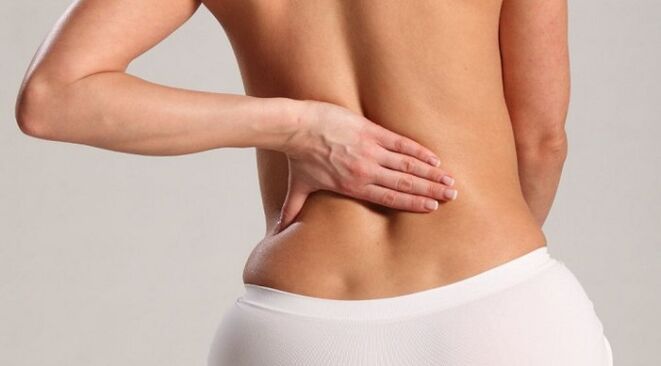
What is osteochondrosis of the lumbar column
The diagnosis implies the evolution of degenerative processes in cartilage, which consists of intervertebral joints.Osteochondrosis in the lower back is characterized by changes in the joints and vertebrae precisely in the lumbar region.
Osteochondrosis is a progressive degeneration of cartilage in the bone.
Often, osteochondrosis ends with the formation of an intervertebral hernia, which is a source of constant back pain in the patient.Pop osteochondrosis gives rise to the pinch of the nerves, as well as blood vessels, causing a violation of the trophic tissues of the internal organs, which is charged with symptoms of functional disorders in the functioning of the body.
The causes of lumbar disease
Osteochondrosis of the spine belongs to a number of diseases, the exact causes of which have not yet been established.We know that the defeat of the spine is preceded by metabolic disorders, to which a large number of negative factors can drive.The most common examples:
- Lack of acute movement.
- Details of the metabolism of electrolytes.The intervertebral joint trophy is disturbed due to chronic diseases.
- Congenital or acquired ODA violations.
- Expensive physical activity is the most common reason.
- Incorrect lifestyle.The abuse of salt products, fries, fatty and smoked leads to dystrophic changes in the intervertebral joints.
With osteochondrosis, the back muscles are gradually atropianated, the patient begins to look.
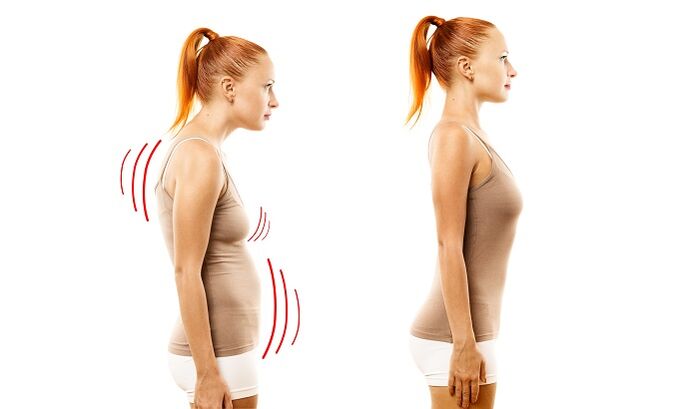
Doctors note a hereditary predisposition to the development of the disease.In addition, the factors caused include the lack of treatment of vertebral curvature - lordosis, scoliosis, cyphosis.
Characteristic symptoms
The signs of osteochondrosis in the lumbar region are characterized by the appearance of various symptoms, as well as the development of three pathological syndromes: radicular, ischemic, vertebral.
The symptom of pain may appear:
- Low back pain- Painful lumbar pain.The symptom disappears almost completely when the body is placed in a horizontal position.
- Lumbago- Lightning pain.The symptom is distinguished by the ability to radiate.
- Sciatica- Lumbar pain spreading in the buttocks and legs.The symptom is accompanied by the loss of the sensitivity of surface tissues.
The back on the back is compared to the shock of the current, and the patient freezes in the position in which there is no pain.
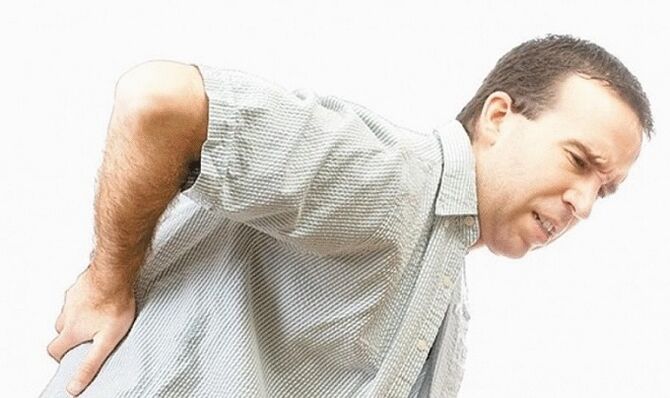
The signs of lumbar osteochondrosis include the symptoms of specific syndromes:
- Symptoms of radicular syndrome include drilling pain in the area innervated by a pinched nerve.At the same time, the epicenter of painful symptoms is observed in limbs, buttocks, hips and the bottom of the abdomen.
- Symptoms of ischemic syndrome are associated with circulatory disorders, a lack of circulation in certain nutrient tissues.
- Symptoms of spine syndrome include muscular atrophy, vertebral movement, a change in the position of the basin, which causes obvious changes to the patient's approach and movement method.
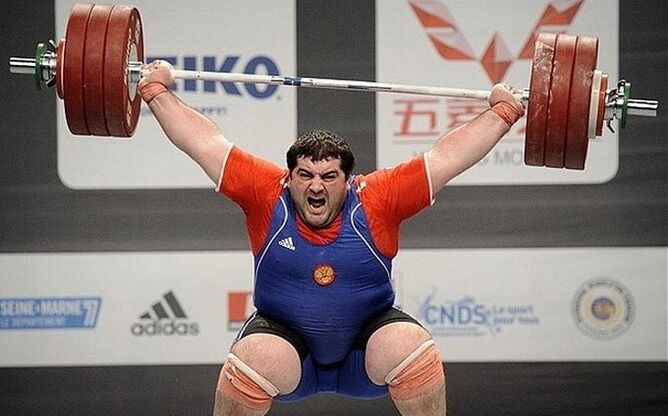
When you raise it the severity of the nerve roots and the blood vessels are in a hurry and the pain in the nervous area begins to bother.
Differences compared to other signs diseases
Distributive lesions of the vertebrae in the lumbar region are accompanied by a number of characteristic symptoms only for this disease:
- Constant cold of the skin of the buttocks and hips.
- Decrease in libido, helplessness.
- The feeling of goosebumps inside the thigh and buttocks.
- Increase in dry skin in the lower back and buttocks, accompanied by peeling.
- Adolescent to constipation.
- Urine incontinence.
- A burning sensation in the sacrum.
Even the complete coincidence of manifestations of the disease with the symptoms described requires diagnostic studies to confirm the diagnosis (MRI, radiography, Tomodensitometry).
Determination of the scene and the type
Intervertebral osteochondosis can be acute and chronic.Very often, there is a transition from the disease in a slow form, because it is difficult to heal the disease completely.Chronic osteochondosis is characterized by the regular presence of relapses - they complicate the life of the patient during the season out of the season.
Local degenerative changes are quite rare.Often, the destruction of the vertebrae of the lumbar region is accompanied by common osteochondosis, which affects several parts of the spine at the same time.The disease is characterized by the immensity of the pain and the obvious disorders of the patient's mobility.
4 degrees are distinguished by osteochondrosis:
- Initial changes.The core of the jacket moves inside the disc.Symptoms - shelters can occur in the affected section.
- Damage the fibrous ring.Several cracks are formed on it, an increase in the mobility of the vertebrae and the hypertonicity of the nearest muscles are observed.
- Rupture of a fibrous ring.It is accompanied by a severe session of the department, the formation of hernia and the radicular syndrome.
- Deformation of the spine.It is accompanied by a displacement of the vertebrae, as well as the growth of the bone tissue of the spine, which leads to the immobilization of the patient.
The stage of development of the disease is determined by a vertebrologist using a palpation examination and diagnostic measures.
How is osteochondrosis in the lumbar region treated
The treatment of osteochondrosis in the lumbar region depends on the degree of changes.A prerequisite to be taken in time, carry out an exam and choose a treatment tactic so as not to start the disease.In the last stages of osteochondrosis in the lumbar region, only surgical treatment of the spine (vertebroplasty) is effective.
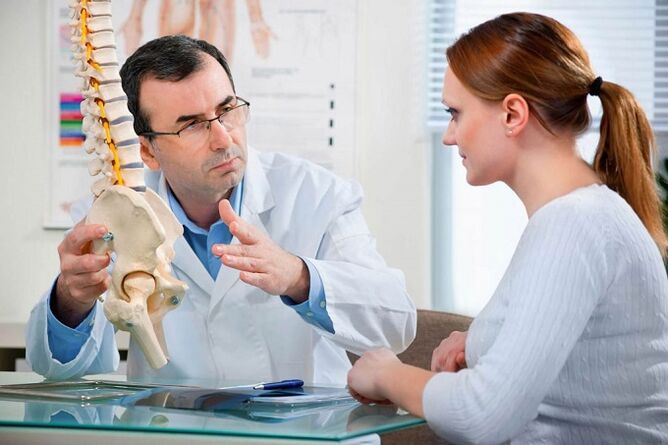
It is very important to consult a doctor for a treatment in time, because in the late stages of osteochondrosis, only surgical treatment of the spine is effective.
The treatment of lumbar osteochondosis has the main objectives:
- Elimination of the cause of dystrophic processes.
- Elimination of symptoms of the disease.
- Activation of the restoration of intervertebral joints.
- Reinforcement of the muscle apparatus.
To achieve objectives, a set of measures is used, including exercise therapy, physiotherapy, diet, drug treatment, massage.An important condition is regularity.Osteochondrosis treatment methods may include fixing the affected area of the back with corsets.Getting rid of osteochondrosis and preventing your relapse will help kinesiotherapy.
Therapeutic famine is carried out in accordance with the doctor.As a rule, compliance with the principles of a healthy diet, the minimum information of the use of salt, as well as the normalization of the alcohol consumption regime.
With severe osteochondrosis of the lumbar column, it may be necessary to comply with the bed diet at the first treatment.After eliminating intense pain, the patient should get up, perform elementary physical exercises.
With osteochondrosis of the lumbar department, doctors complete the therapeutic scheme with physiotherapeutic procedures:
- Electrophoresis.
- Magnetotherapy.
- Acupuncture.
- Electroacupuncture.
It is important to observe the regularity of osteochondosis procedures, as well as to undergo complete treatment.
With osteochondrosis of the lumbar column, as for other locations of the disease, an increase in physical activity is recommended by realization exercises recommended by the orthopedic doctor.
If the belt will help
It is worth choosing a belt for the lower back with osteochondrosis only with the attending physician.There are bandages, corsets, warming and neoprene belts that have various indications and contraindications for their application.
Wearing a corset and bandage is one of the main auxiliary methods to restore the joints.The hard belt of fixed osteochondrosis The lumbar region in a certain position eliminates the load of muscles and joints.A warming belt for osteochondrosis can be used independently to eliminate pain and prevent relapses from the disease.The dog belt protects the lower back from air currents well, relaxes the muscles.
With serious damage, only a doctor selects the belt for the treatment of osteochondosis.As a rule, it is improved hard corsets that provide the immobility of the lumbar column and the sacred spine.
Massage
With lumbar osteochondosis, a therapeutic massage lesson is indicated, aimed at normalizing the trophic joints of the lower back and carrying the muscles to a normal condition.The massage must be carried out by a specialist.The contraindication for osteochondrosis for massage is an intervertebral hernia.Manipulations are prohibited which imply a strong mechanical effect (the use of plastic devices and vibration masseurs).
Exercises
Exercises for the lumbar column in the context of exercise therapy for osteochondrosis should select an orthopedist.General rules to treat physical exercises:
- The predominance of static exercises.
- Lack of net movements during execution.
- Moderation of physical activity.
- Savings methods that exclude the destruction of vertebrae.
The regularity of physical effort is important.Osteochondosis exercises are included in the morning load program, carried out daily.
Pharmacotherapy
The duration of treatment of the lumbar column osteochondrosis, as well as the list of medicines, are determined by the doctor.
At the start of therapy, they are prescribed:
- Ainsad aust.
- Vitamins injections from group V.
- Chondroprotective injections.
- Injections of muscle relaxants.
- External so.
After eliminating intense pain and acute inflammation, the patient is transferred to forms of drugs for tablets.The first two weeks continue to treat NSAIDs.The use of chondroprotectors implies a complete prolonged treatment with a combination of internal and external dosage forms.
When detecting lumbar disease in the early stages, the drugs in the chondroprotective group are prescribed.The minimum duration of their reception is 3 months.In the absence of pronounced pain symptoms, the internal use of NSAIDs is replaced by external pain relievers to reduce the negative effect of pharmacological agents on the gastric mucosa.
With intense pain, the blocking is carried out - the introduction of pain relievers in the affected area of the lower back.
Symptoms of advanced lumbar osteochondosis are able to spoil a person's life.For a successful treatment of the disease, you should consult a doctor at the first signs of the disease - pain in the lower back of the low severity.Complex therapy in a timely manner can prevent irreversible changes in the lumbar column.

























